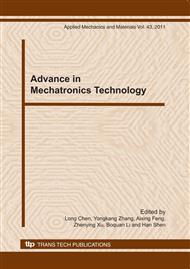p.382
p.387
p.391
p.397
p.401
p.405
p.409
p.414
p.420
Research on the Key Process Parameters in Direct Laser Deposition Using Coaxial Inside-Beam Wire Feeding
Abstract:
Aimed at the disadvantages of the lateral wire feeding in direct laser deposition (DLD), a novel device with coaxial inside-beam wire feeding is applied in the process based on the patent technology of “hollow laser beam and internal wire feeding’’. During the laser cladding process, laser beam can be coupled with wire accurately. The comparison experiments of laser cladding are carried out on the substrate of 45# steel with different process parameters. The effects of crucial process parameters, such as laser power, scanning speed and wire delivery rate on the cladding layer are dicussed. The optimum laser cladding process and related parameters are obtained. Microstructure of the cladding layer is characterized by scanning electron microscopy (SEM). Experimental results show that, wire melts adequately; the cladding layer is symmetrical and smooth; the microstructure is uniformly distributed with no porosity; firm combination with substrate is achieved.
Info:
Periodical:
Pages:
401-404
Citation:
Online since:
December 2010
Authors:
Price:
Сopyright:
© 2011 Trans Tech Publications Ltd. All Rights Reserved
Share:
Citation:


